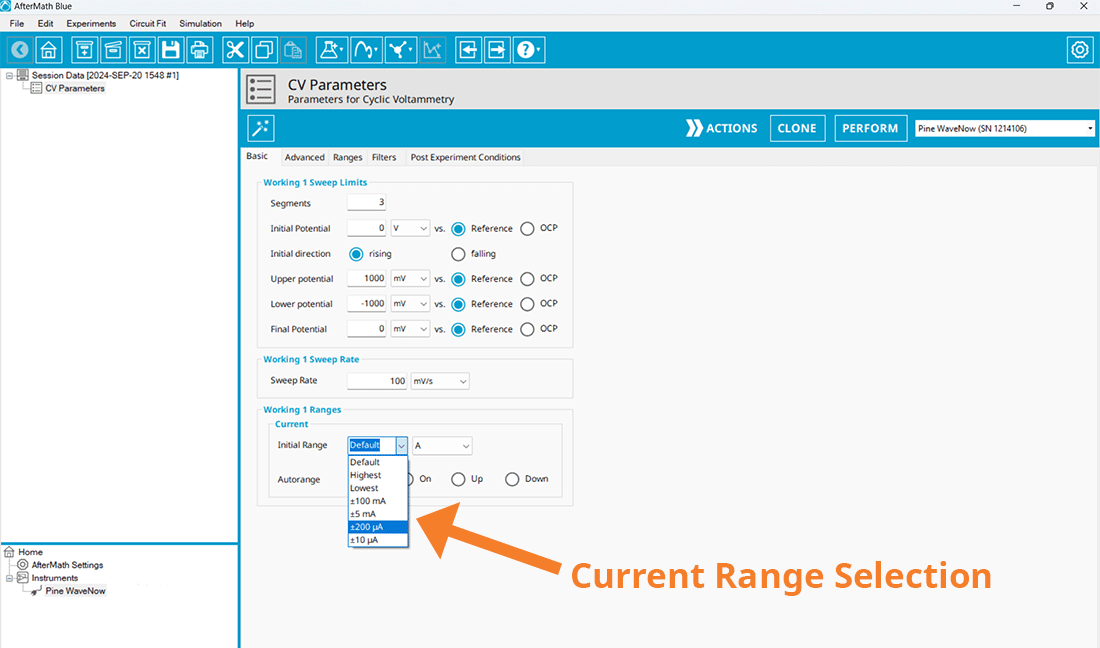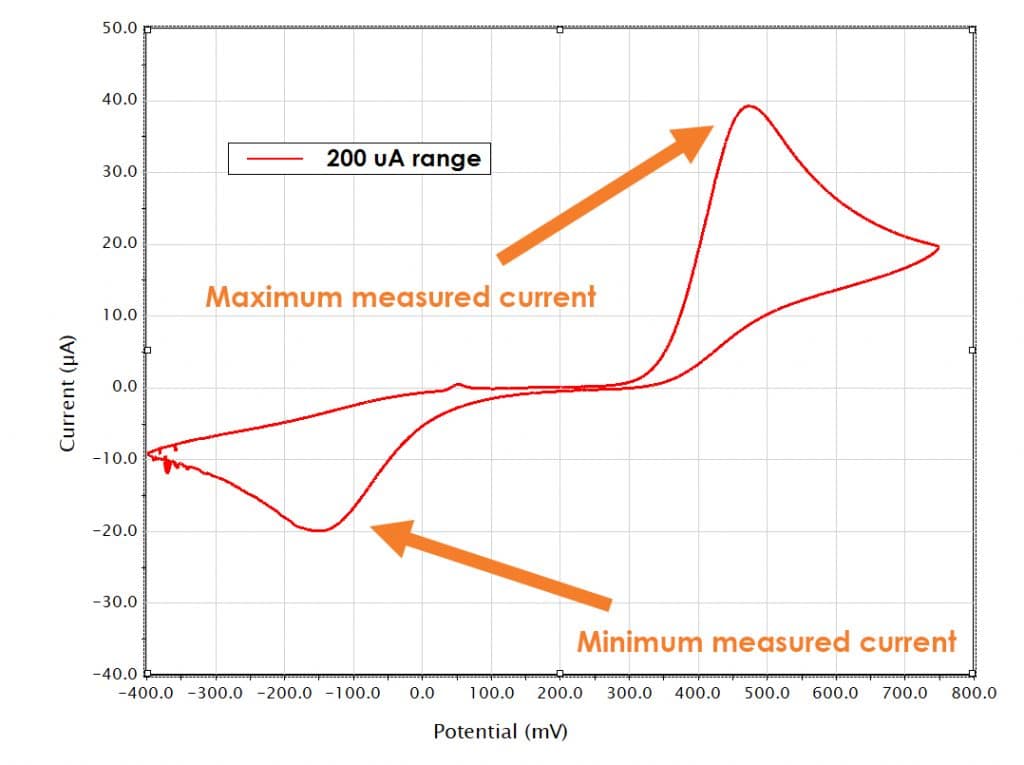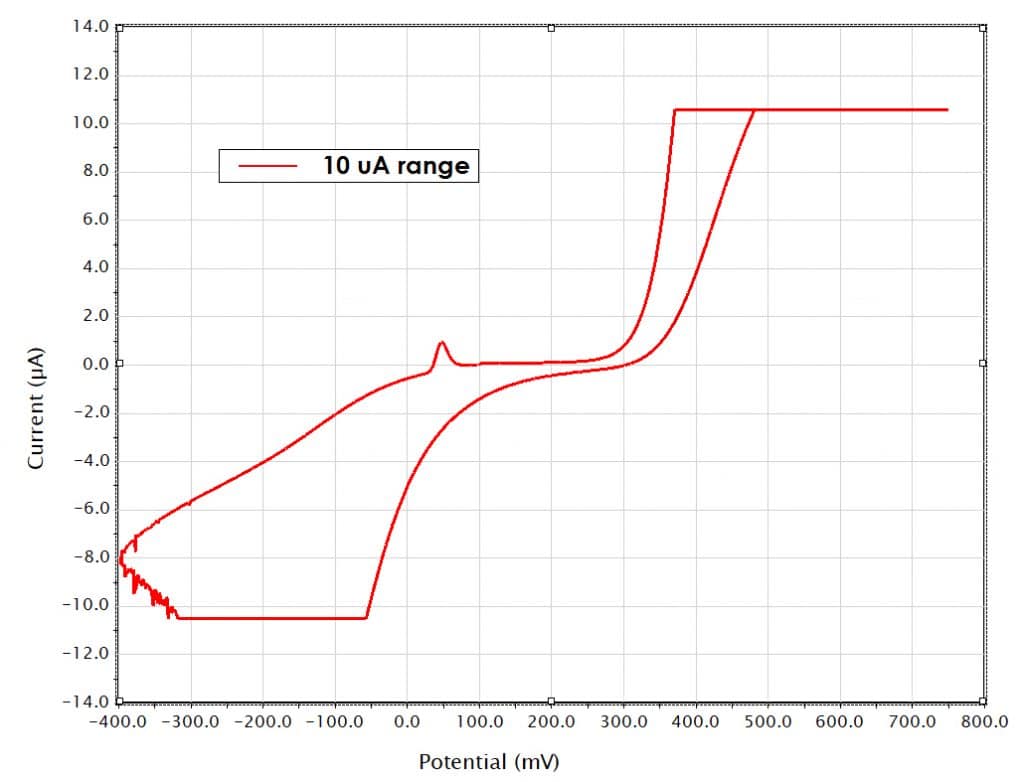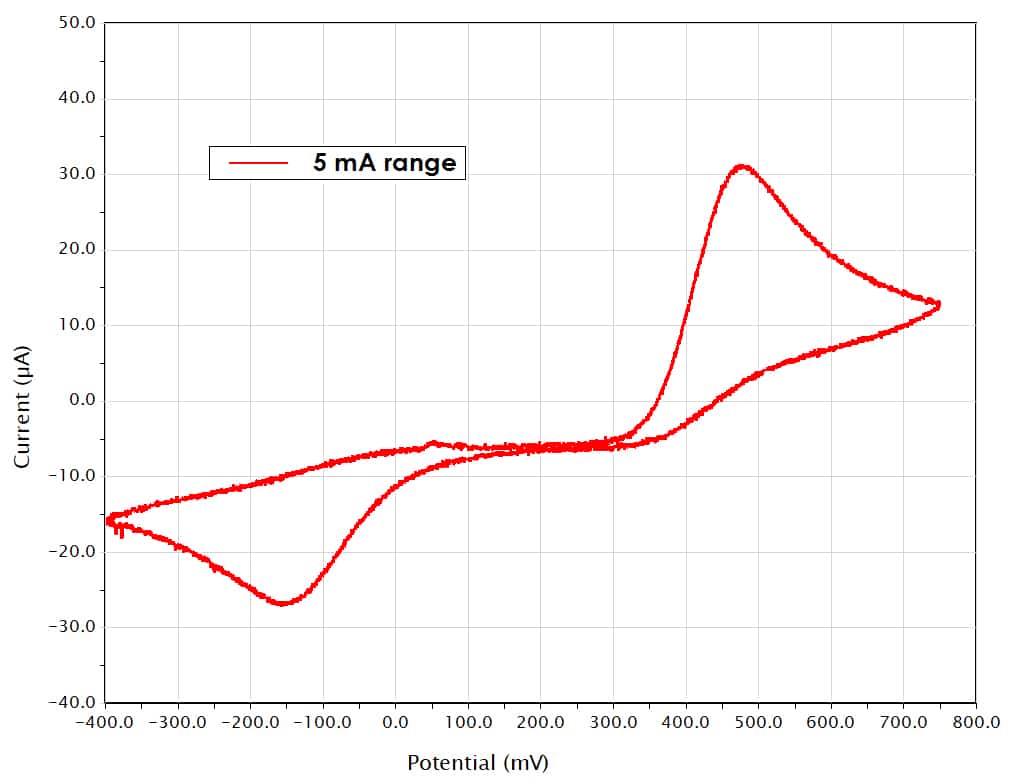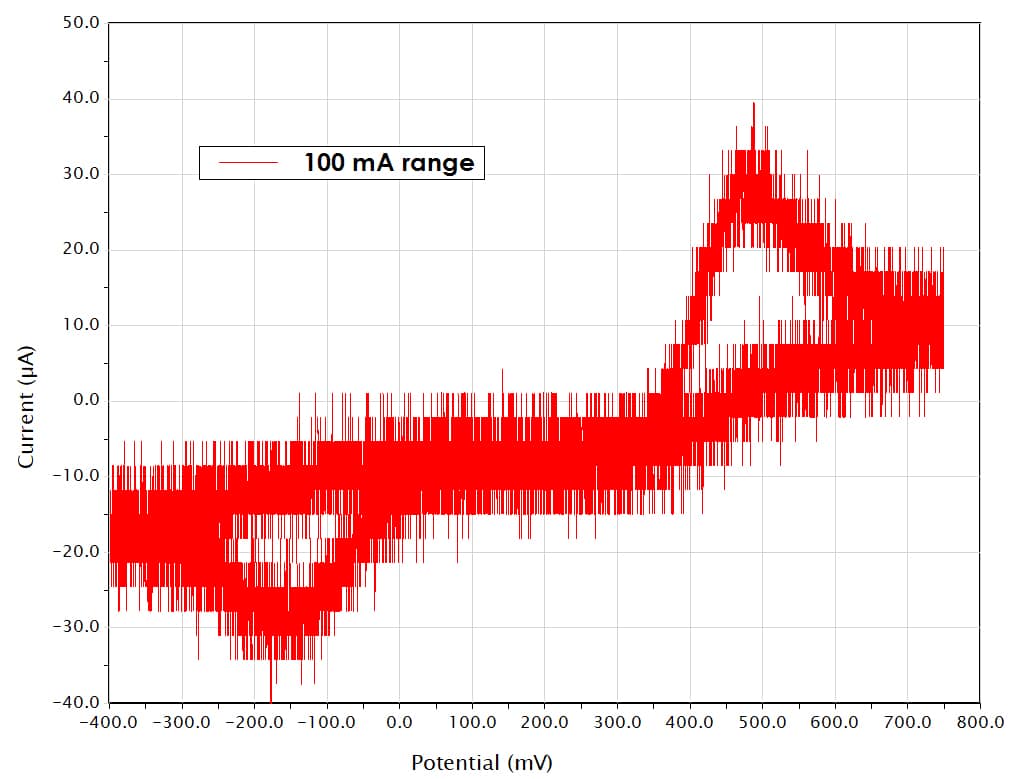1. Introduction
All analytical instruments have both hardware and software limitations. A potentiostat is no different and has limitations in measuring both the magnitude and resolution of the current and voltage. Accurate measurements require proper selection of the “electrode range,” which is accessed in our AfterMath software. Selection of the appropriate electrode range is dependent on the experimental conditions. Variables such as the concentration of the analyte, working electrode area, and counter electrode area, affect how much current or voltage can be measured and hence, which electrode range to select.
1.1. Current Range
Potentiostats built before computers are controlled using buttons or dials on the front panel of the instrument. Potentiostats built today are almost exclusively computer-controlled. Computers operate strictly in the digital domain, using zeroes and ones to communicate and store information. Current and voltage in an electrochemical experiment are analog signals. A potentiostat has built-in digital to analog (D/A) and analog to digital (A/D) converters to communicate with a computer. For example, when you tell the potentiostat to apply 1 V, it needs to communicate a digital signal that the potentiostat, in turn, produces the desired analog value of 1 V. This is the case where a D/A converter is needed. Likewise, when measuring the current at your working electrode, that analog current signal needs to be converted to a digital signal that your computer interprets as the measured current. This is the case of an A/D converter. A/D converters, however, also limit the electrode range.
An A/D converter has a certain number of levels it can access, which defines the measured range. An ideal 16-bit A/D converter can distinguish 216 = 65,536 levels. Each level is assigned to one analog value which spans the entire electrode range. As an example, for a current range from + 10 to – 10 mA, 65,536 levels are evenly divided across this range. + 10 to – 10 mA is a total of 20 mA, divided by 65,536 levels results in ~ 0.305 μA per level. One level is assigned to the value 0.305 μA, another level is assigned to 0.610 μA, the next level is assigned to 0.915 μA, etc, spanning from -10 mA to +10 mA. For the ±10 mA current range, 0.305 μA defines the smallest possible resolution. If we take the same 16-bit A/D converter but assign it to the ±1 A current range; +1 to -1 A is a total of 2 A, divided by 65,536 bytes results in ~ 30.5 μA per level. For a ±1 A current range, 30.5 μA defines the smallest possible resolution.
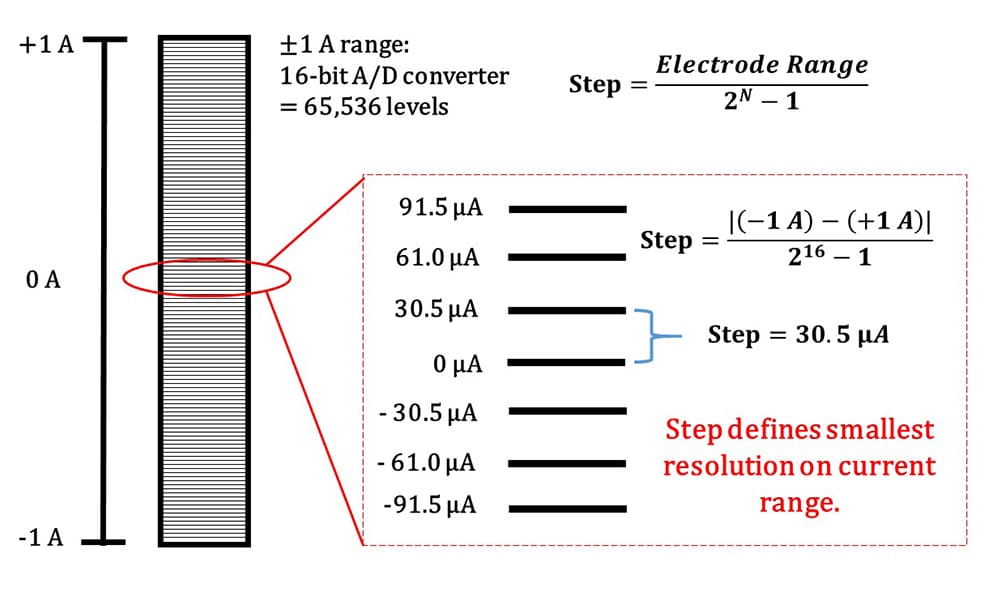
Figure 1. Diagram of A/D converter in potentiostat. The A/D converter determines the electrode range and the resolution at that range.
During a voltammetry experiment, the current range can be selected in the experimental parameters section in AfterMath (see image below).
To acquire to best quality data, the user should select the smallest current range necessary to detect the measured current. In the cyclic voltammogram of ~1 mM acetaminophen below, the maximum current measured is ~40 μA, and the minimum current measured is ~ -20 μA using the ±200 μA current range.
The data in figure 3 was taken using the WaveNow potentiostat, which has 4 current ranges, ±10 μA, ±200 μA, ±5 mA, and ±100 mA. With a maximum measured current of ~ 40 μA and a minimum measured current of ~ -20 μA, the ±200 μA current range provides the best quality data.
In addition to the resolution, the maximum and minimum measurable current is defined by the electrode range. In the ±10 μA current range, no current can be measured above +10 μA or below -10 μA. If the measured current exceeds the current range, an overload error will occur, and the measured current will flat line. In the 1 mM acetaminophen system, +40 μA is the maximum measured current and -20 μA is the minimum measured current. If the 10 μA current range is selected in the 1 mM acetaminophen system, the current will flat line at the +10 and -10 μA limits.
Conversely, if the selected electrode range is too large, you will observe digital noise. Below are examples of the 1 mM acetaminophen cyclic voltammogram using the ±5 and ±100 mA current range.
In Figure 5, you can start to observe visible noise in the ±5 mA current range. However, in Figure 6, the digital noise becomes significantly more pronounced in the ±100 mA current range.
A digital camera is a helpful way to think about the current range. Selecting a current range that is too large is similar to taking a digital photograph and zooming into a small section of the picture. The picture becomes blurry and pixelated when zoomed in. Likewise, selecting a different lens to focus on the area you want before taking the picture is the equivalent of selecting the correct current range for your experiment, resulting in the highest resolution.
If you are performing an experiment for the first time and don’t know what the measured current will be, most potentiostats have an autorange feature. Autorange will automatically switch the electrode range mid-experiment to prevent an overload error. However, once the magnitude of the measured current is determined, the proper electrode range should be selected, and autorange should be turned off.
The same principles that apply for the current range, also apply for the voltage range while performing galvanostatic experiments.

